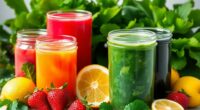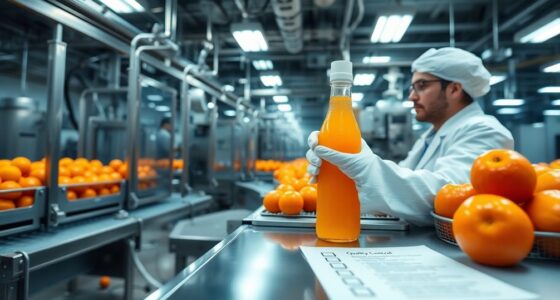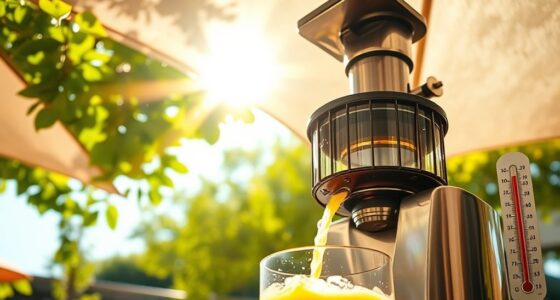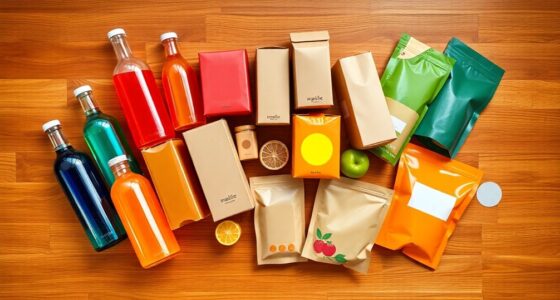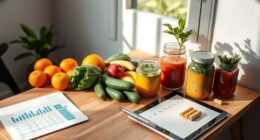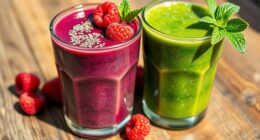The beverage packaging industry is riding a green revolution as recyclable systems take center stage, slashing waste and environmental impact. Brands like Coca-Cola and Carlsberg are leading the charge with innovations like lightweight materials and paper bottles. This shift not only meets consumer demand for eco-friendly options but also drives investments in recycling infrastructure. As more companies adopt sustainable practices, you'll discover how these changes shape the future of food and drink packaging in exciting ways.
Key Takeaways
- The beverage packaging industry is increasingly adopting 100% recyclable materials, driven by consumer demand for sustainability and regulatory pressures.
- Innovations like Carlsberg's paper beer bottles and Frugalpac's recycled paperboard containers significantly reduce plastic waste and carbon footprints.
- Brands are investing in recycling infrastructure to ensure proper disposal and enhance the lifecycle of recyclable packaging.
- Smart packaging technologies, including QR codes, are improving consumer engagement and education on recycling practices.
- The global beverage packaging market is projected to grow significantly, reflecting the shift towards eco-friendly and recyclable systems.
Innovative Alternatives for Sustainable Packaging
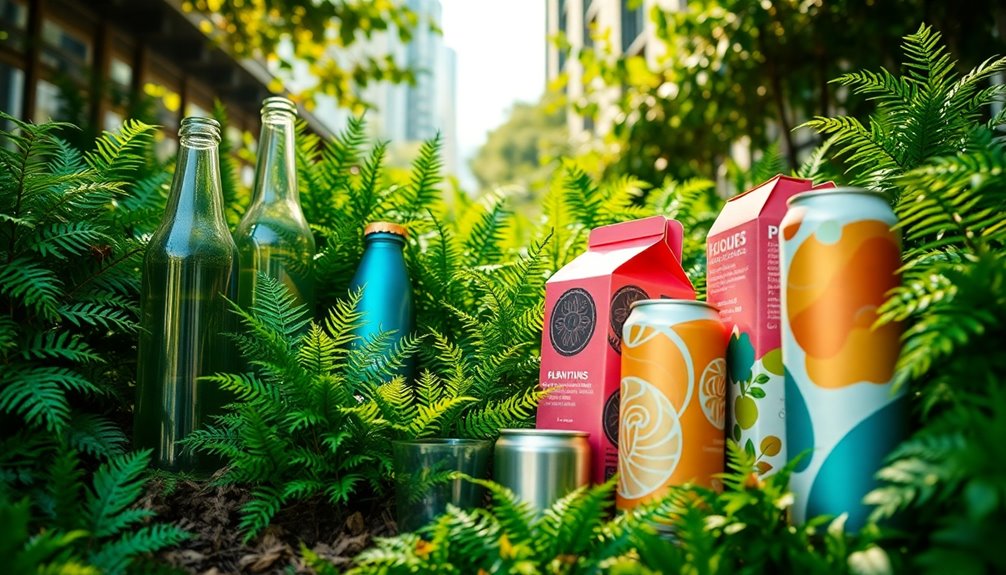
As companies endeavor to meet growing consumer demand for sustainability, innovative alternatives for beverage packaging are emerging.
You'll notice a surge in biodegradable and compostable materials made from renewable resources, greatly reducing landfill waste and environmental impact. Brands like Coca-Cola are pioneering plant-based bottles, aiming for 100% recyclable packaging by 2025.
Minimalist packaging is also gaining traction, allowing you to enjoy eco-friendly choices while minimizing material usage and costs. Reusable packaging methods, such as returnable bottles, promote a circular economy, cutting down on single-use waste.
Additionally, innovative designs like cellulose-fiber paper bottles and recyclable flexible drink pouches are setting new standards for sustainable packaging. These advancements are reshaping your beverage experience for a greener future, with a focus on reducing landfill waste that aligns with eco-conscious consumer preferences.
Success Stories in Sustainable Packaging
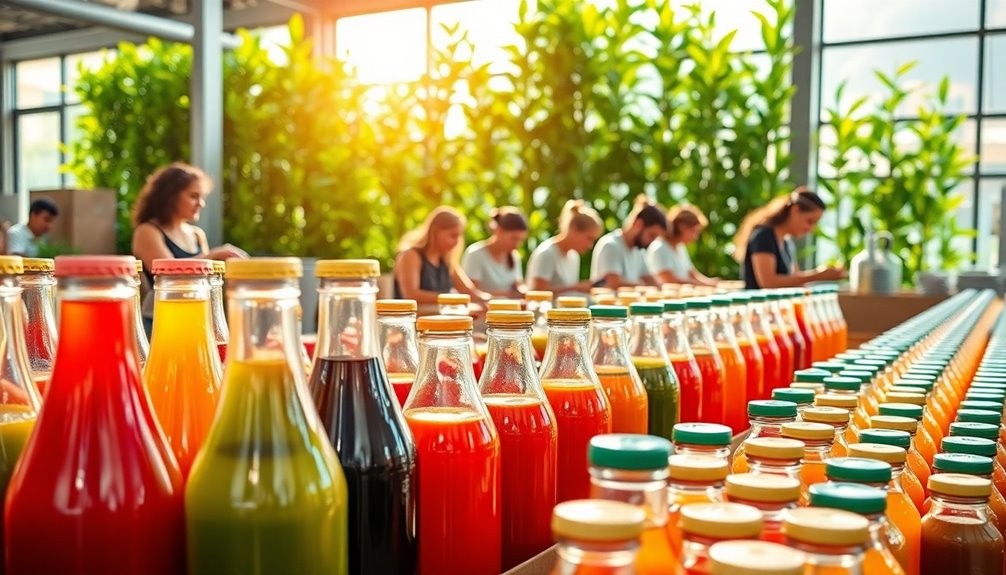
The shift toward sustainable beverage packaging is gaining momentum, with several companies leading the way and demonstrating what's possible.
Coca-Cola aims for 100% recyclable packaging by 2025, introducing plant-based bottles and investing in recycling infrastructure.
Danone's exploration of plant-based yogurt containers and reusable water bottles promotes eco-friendly habits.
Innocent Drinks' "bottle for a bottle" campaign encourages recycling, boosting brand loyalty while enhancing waste reduction.
Carlsberg's innovative paper beer bottles and Snap Pack technology cut plastic waste by 76%.
Meanwhile, Frugalpac's Frugal Bottle, crafted from 94% recycled paperboard, is lightweight and boasts an 84% smaller carbon footprint.
These brands exemplify how sustainable packaging innovation can transform the beverage industry and reduce environmental impact.
Challenges in Transitioning to Eco-Friendly Packaging
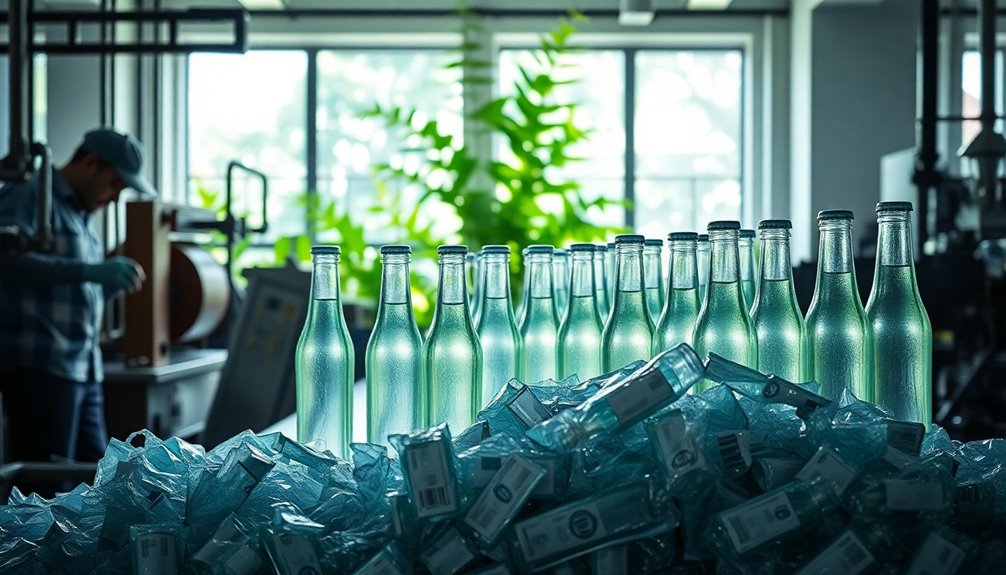
Shifting to eco-friendly packaging isn't without its hurdles, and businesses often face significant challenges that can impede their progress. Here's a quick look at some key issues:
| Challenge | Description | Impact on Businesses |
|---|---|---|
| Upfront Costs | Biodegradable and compostable options are expensive. | Limits adoption, especially for small businesses. |
| Recycling Infrastructure | Inadequate systems hinder disposal of sustainable materials. | Complicates waste management. |
| Shelf Life & Safety | Some eco-friendly materials struggle with shelf life and safety standards. | Raises concerns for food and beverage products. |
To overcome these challenges, consumer education is essential. Without proper knowledge on disposal techniques, the environmental benefits of eco-friendly packaging can be lost.
The Future of Eco-Friendly Packaging in the Food and Drink Industry
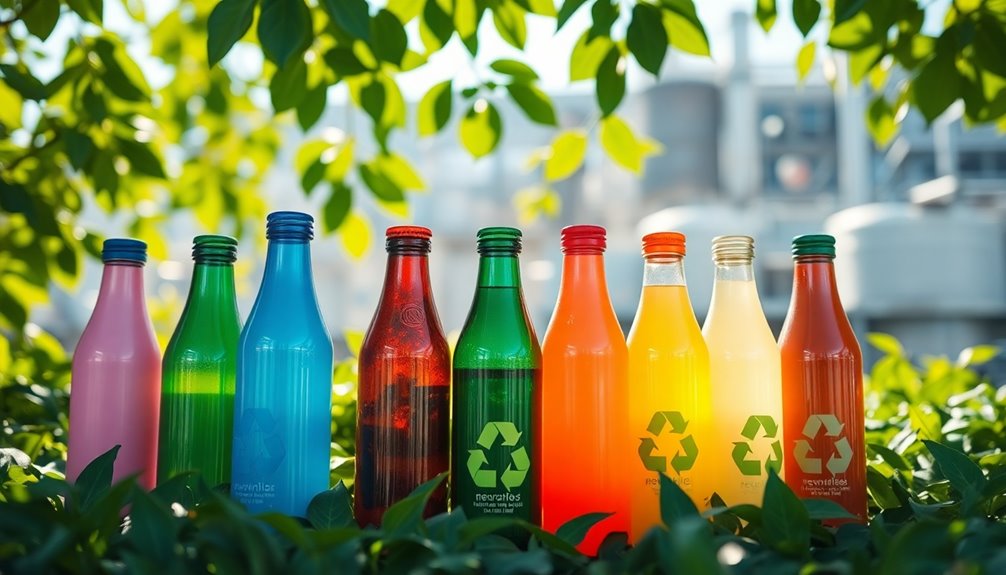
While many industries grapple with sustainability, the food and drink sector is leading the charge toward eco-friendly packaging solutions.
You can expect to see a rise in biodegradable and compostable materials, with companies increasingly turning to plant-based plastics from renewable resources.
Innovative smart packaging technologies will engage you with features like QR codes that offer nutritional info and freshness updates.
Significant investments in recycling infrastructure are underway, with brands like Coca-Cola targeting 100% recyclable packaging by 2025.
Innovations such as Carlsberg's paper beer bottle also emphasize reducing carbon footprints.
A collaborative effort among businesses, consumers, and regulatory bodies is essential for overcoming challenges, ultimately promoting sustainable practices and advancing a circular economy that minimizes waste and maximizes resource efficiency. Additionally, the use of renewable resources in packaging materials can further support sustainable practices within the industry.
A Greener Future for Food and Drink Packaging
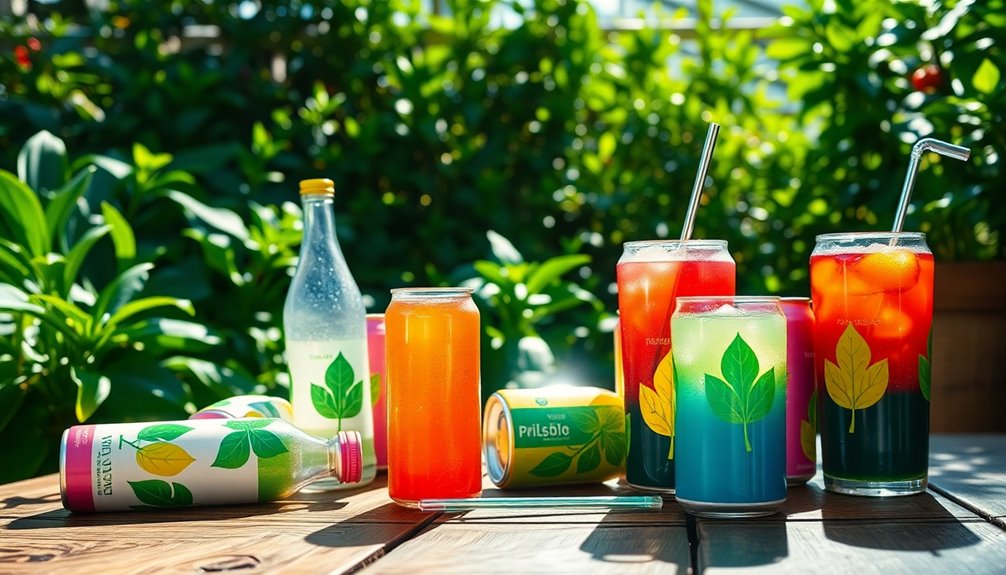
As consumer awareness of environmental issues grows, companies in the food and drink industry are stepping up their game to create greener packaging solutions.
Sustainability is at the forefront, with many brands investing in recyclable plastic and eco-friendly packaging options. This shift not only meets consumer expectations but also enhances brand image, as 73% of consumers are willing to pay more for environmentally responsible products.
Packaging innovation, like plant-based plastics and smart technologies, is emerging to help reduce plastic waste while improving the overall consumer experience.
As regulations tighten, the industry is poised for significant growth, underscoring the importance of sustainable practices in shaping a greener future for food and drink packaging.
Growth Projection and Sustainable Shift in The Beverage Packaging Industry
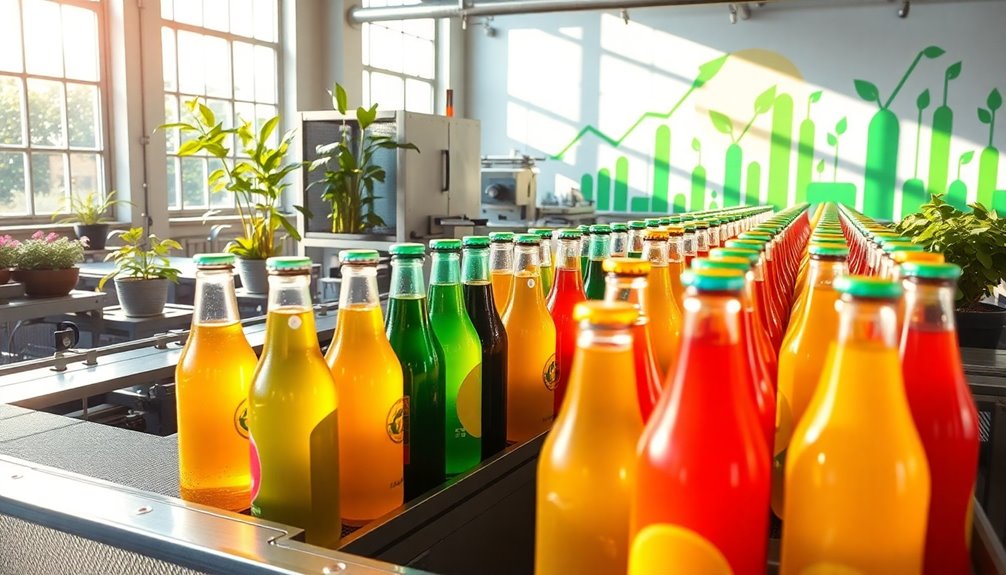
As the global beverage packaging market is set to grow from USD 144.40 billion in 2023 to USD 217.54 billion by 2032, you'll notice an increasing emphasis on sustainability.
Consumers are demanding eco-friendly packaging, which is pushing companies to innovate and adopt greener practices.
This shift not only meets regulatory requirements but also aligns with modern consumer values, creating a more responsible industry. Additionally, companies that leverage AI-driven analysis can enhance their sustainability efforts by optimizing packaging materials and reducing waste.
Market Growth Forecast
The beverage packaging market is on an impressive trajectory, projected to expand from USD 144.40 billion in 2023 to USD 217.54 billion by 2032, reflecting a robust compound annual growth rate (CAGR) of 4.70%.
This growth is fueled by a shift towards sustainable future practices and environmentally friendly solutions. You'll see companies prioritizing innovative packaging technologies that not only reduce waste but also enhance resource conservation.
As the industry works to lower the carbon footprint of wine and other beverages, recyclable systems are becoming essential. By balancing convenience, cost-effectiveness, and environmental responsibility, the packaging market is transforming, ensuring a greener landscape for consumers and producers alike.
Recent advancements in solar energy are also influencing sustainable packaging solutions, as companies seek to power their operations with renewable resources.
Embrace this change and witness the positive impact on our planet.
Consumer Sustainability Expectations
Consumer expectations for sustainability in beverage packaging are rising rapidly, driven by a growing awareness of environmental issues.
You're part of a movement where 73% of consumers, especially younger ones, are willing to pay more for eco-friendly packaging. This shift in consumer demand is pushing brands to meet sustainability goals by adopting green practices and using recyclable materials.
Companies are innovating with plant-based packaging to reduce packaging waste and enhance environmental responsibility. As the digital asset management market is projected to grow considerably, it's clear that your preferences are shaping the industry.
Embracing sustainable solutions isn't just a trend; it's a competitive necessity for brands looking to thrive in this evolving landscape.
Sustainable Packaging Trends and Innovations
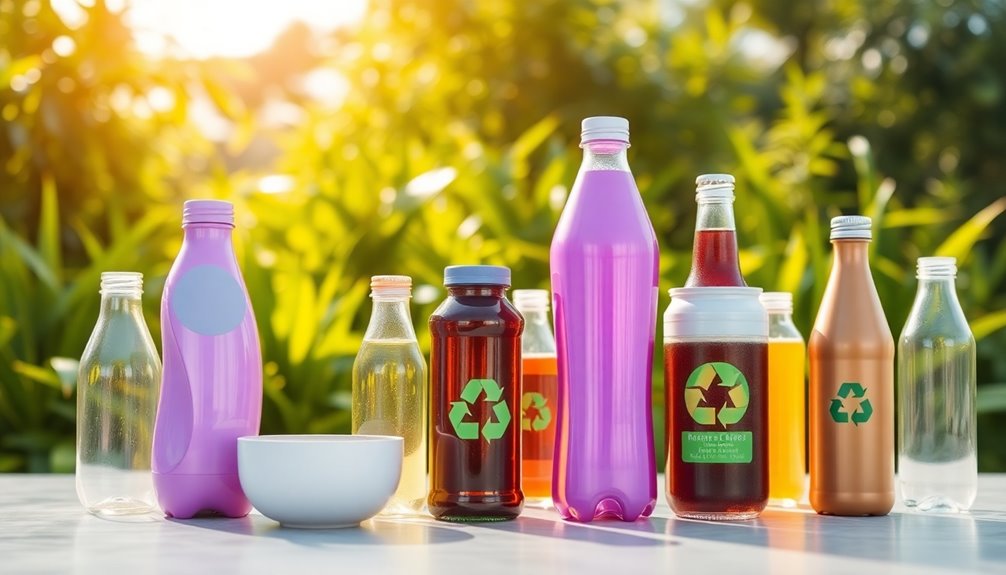
You're likely noticing a shift in beverage packaging towards innovative materials and smart solutions that enhance sustainability.
Brands are embracing minimalist designs while using plant-based and recycled materials to reduce waste.
This trend not only appeals to eco-conscious consumers but also sets new standards for the industry. Moreover, the growing demand for sustainable products is influencing the packaging strategies of beverage companies.
Innovative Material Developments
As the beverage industry embraces sustainability, innovative material developments are transforming packaging solutions.
You'll find that brands are increasingly using innovative materials like cellulose-fiber paper and bioplastics. For instance, Frugalpac's Frugal Bottle is five times lighter than glass and cuts carbon emissions by 84%.
Carlsberg's paper beer bottles and Snap Pack technology drastically reduce plastic waste by 76%, highlighting sustainable packaging options.
PET bottles remain popular due to their 100% recyclability and lightweight design, which minimizes transportation emissions.
Additionally, CartoCans offers paper-based packaging that's 30% more eco-friendly than traditional aluminum or PET.
These advancements point towards a future where recyclable systems contribute considerably to reducing plastic waste and promoting a greener beverage industry. Aromatherapy can stimulate the limbic system, influencing emotions and enhancing the overall consumer experience with beverages.
Smart Packaging Solutions
While the beverage industry moves towards sustainability, smart packaging solutions are taking center stage, revolutionizing how brands engage with consumers.
These innovations, like Carlsberg's Snap Pack technology, highlight sustainable practices by reducing plastic waste by 76%. You'll find QR codes enhancing the consumer experience by providing nutritional information and promotional content, promoting transparency.
The rise of paper-based bottles made from innovative materials such as polyethylene furanoate (PEF) offers a greener alternative to traditional packaging. Additionally, plant-based packaging initiatives from companies like Coca-Cola focus on renewable resources that can be fully recycled, minimizing the environmental footprint.
Active packaging technologies, using sensors to track freshness, further enhance your experience while supporting recyclable systems in the beverage sector.
Minimalist Design Approaches
Minimalist design approaches in sustainable packaging are gaining traction as brands recognize the need to balance functionality with eco-friendliness.
By focusing on reducing material usage and costs, companies like Coca-Cola and Carlsberg are embracing lightweight materials and recyclable options. This innovation in packaging not only cuts down on plastic waste but also enhances brand perception among consumers.
For instance, Carlsberg's Snap Pack technology reduces plastic waste by 76% by combining cans without plastic rings. Additionally, incorporating smart technology, like QR codes, allows you to access product information while minimizing physical labels, further lowering material use.
Ultimately, these eco-friendly options cater to the growing demand for sustainable packaging, with many consumers willing to pay more for eco-conscious designs. Furthermore, adopting recyclable options in packaging aligns with a broader commitment to environmental sustainability.
Sustainable Materials and Their Impact
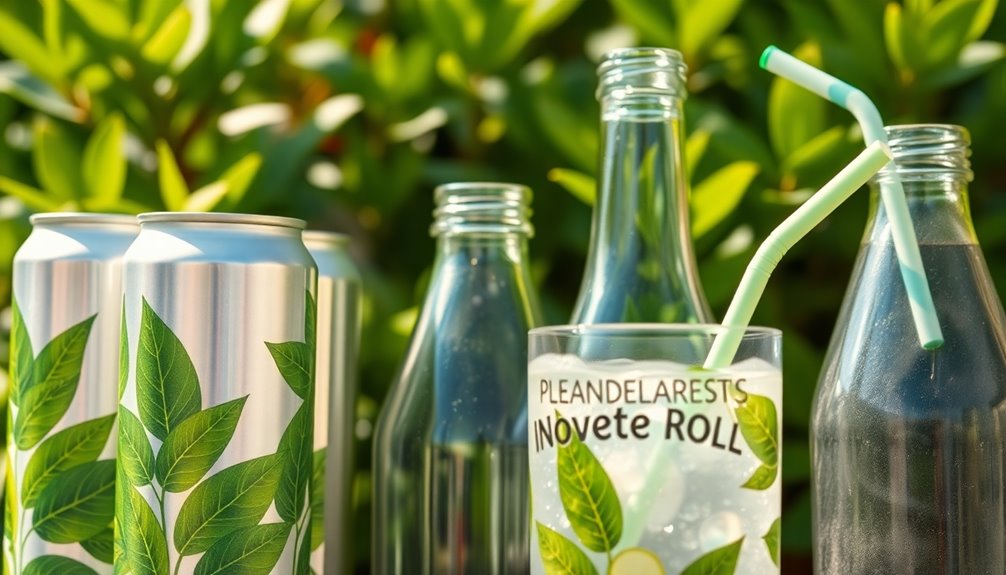
The choice of sustainable materials in beverage packaging can greatly influence environmental impact and consumer perception.
Here are some key points to reflect on:
- Bioplastics like PLA and PHA are derived from renewable resources, offering biodegradable options.
- Aluminum cans boast a 69% recycling rate, considerably reducing transportation emissions compared to glass.
- Flexible drink pouches made from recyclable plastics or compostable films minimize waste and enhance eco-friendly packaging.
- The right sustainable materials improve waste management practices, making recycling programs more effective.
Case Studies and Benefits of Sustainable Packaging
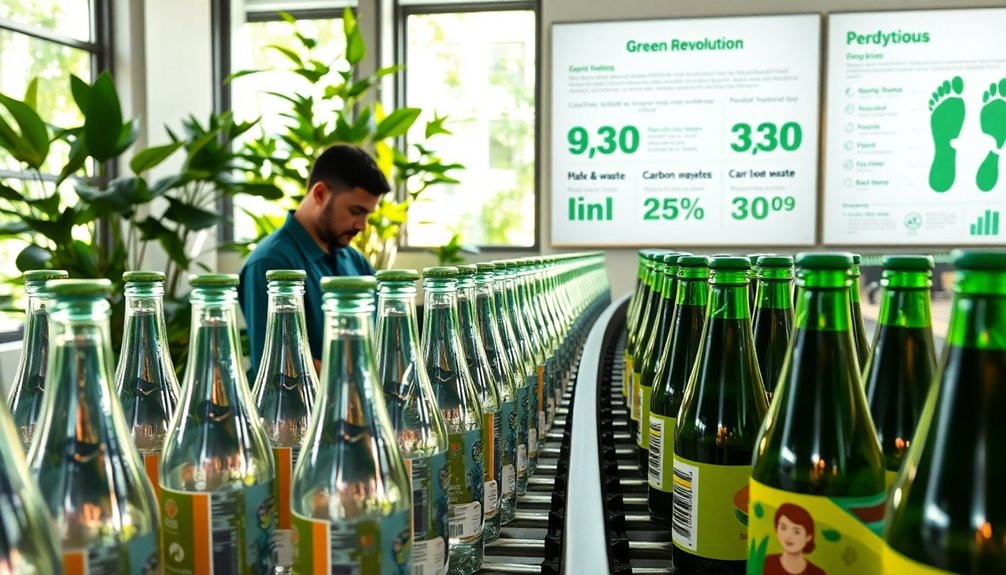
As companies increasingly prioritize sustainability, numerous case studies highlight the tangible benefits of eco-friendly packaging in the beverage industry.
Carlsberg Group's Snap Pack technology has cut plastic waste by 76%, saving over 1,200 tons of plastic annually. Coca-Cola's plant-based bottles showcase their commitment to recyclable materials, while Paper Boat's Tetra Pak cartons enhance brand loyalty among eco-conscious consumers.
Bacardi's plan to replace 80 million plastic bottles with Nodax PHC biopolymer, which biodegrades in 18 months, exemplifies innovation in sustainable packaging.
Additionally, Garçon Wines' flat recycled PET bottles achieve 50% reduced emissions compared to traditional glass.
These examples underscore how adopting sustainable packaging not only benefits the environment but also strengthens brand loyalty and drives market innovation. Environmental innovations play a crucial role in reshaping industry practices and meeting consumer demand for sustainability.
Frequently Asked Questions
What Is the Most Environmentally Friendly Packaging for Drinks?
When you're looking for the most environmentally friendly packaging for drinks, consider options like 100% recyclable PET bottles, which are lighter and reduce carbon emissions considerably compared to glass.
Aluminum cans are another great choice, boasting a high recycling rate and lower environmental impact.
You might also explore innovative solutions like paper-based packaging or flat bottles made from recycled materials, as they minimize waste and promote sustainable practices in the beverage industry.
Is Green Packaging Recyclable?
Yes, green packaging is recyclable!
When you choose materials like PET bottles or aluminum cans, you're opting for options that can be easily recycled.
Bioplastics, derived from renewable resources, are also emerging as recyclable choices.
By supporting companies investing in recyclable solutions, you're contributing to a more sustainable future.
How Does Recyclable Packaging Help the Environment?
Think of recyclable packaging as a lifeboat in a sea of waste. It helps the environment by reducing landfill overflow and minimizing pollution.
When you choose recyclable materials, you're not just cutting down on plastic waste; you're also conserving energy and natural resources. Your choices can lower carbon footprints and support a circular economy, ensuring resources can be reused.
Plus, companies notice your demand for sustainability, pushing them to adopt greener practices.
How Can We Redesign a Product's Packaging to Make It More Environmentally Friendly?
You can redesign a product's packaging to be more environmentally friendly by using biodegradable materials that break down naturally.
Consider minimalist designs to cut down on excess material while still protecting the product.
Implement reusable systems, like refillable containers, to reduce waste and engage consumers.
Explore innovations like plant-based plastics and guarantee clear recycling symbols are visible to educate consumers on proper disposal.
These steps can greatly lower environmental impact and promote sustainability.
Conclusion
As the beverage industry embraces sustainable packaging, it’s clear that change is not just possible—it’s essential. Did you know that by 2025, the global market for sustainable packaging is projected to reach $500 billion? This staggering figure highlights the growing demand for eco-friendly solutions. By choosing recyclable systems, you’re not only supporting innovative alternatives but also contributing to a greener future for our planet. Let’s keep pushing for change and make a lasting impact together! As we move forward, brands are increasingly investing in research and development to create recyclable juice packaging options that minimize environmental impact. By exploring new materials and innovative designs, companies can not only meet consumer demand but also reduce their carbon footprint. Together, we can elevate sustainability practices in the beverage industry and inspire others to follow suit, ensuring a more sustainable future for generations to come.
Cindy thoroughly researches juicing trends, techniques, and recipes to provide readers with practical advice and inspiration. Her writing style is accessible, engaging, and designed to make complex concepts easy to understand. Cindy’s dedication to promoting the advantages of juicing shines through her work, empowering readers to make positive changes in their lives through the simple act of juicing.


